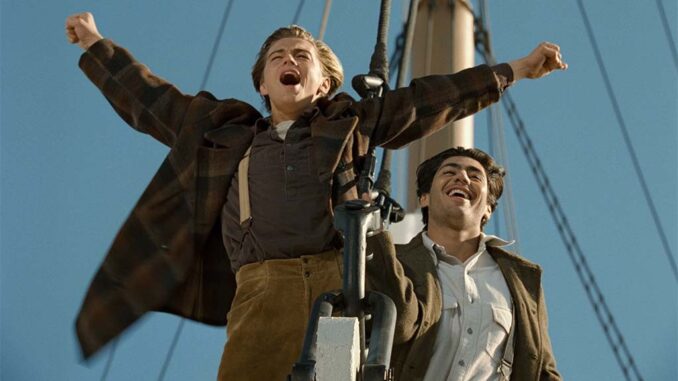
The camera glides, pulling back to reveal a boundless horizon. Two figures stand silhouetted against a setting sun, arms outstretched, defying gravity on the bow of a magnificent ship. "I'm flying, Jack!" Rose exclaims, her voice a symphony of palpable ecstasy, echoed by Jack's grounding presence behind her. It's a moment universally etched into the collective cinematic consciousness, a perfect encapsulation of youthful love, boundless freedom, and the tragic beauty of Titanic. Leonardo DiCaprio, in that very instant, transcended mere acting; he became the embodiment of an ideal. Yet, the pristine perfection we remember on screen conceals an "untold truth"—a messy, human, and utterly spontaneous process that birthed this iconic scene, proving that sometimes, the most profound cinematic magic isn't meticulously scripted, but discovered in the raw, vibrant space between intention and serendipity.
On the surface, the scene is an almost painterly tableau: the wind whipping through hair, the vast ocean stretching before them, the sense of weightlessness achieved through meticulous special effects. DiCaprio, as Jack Dawson, exudes a captivating blend of boyish charm and burgeoning masculinity. His eyes, fixed on Rose's face, convey adoration, excitement, and a touch of awe. He is the anchor to her soaring spirit, guiding her, protecting her, allowing her to abandon herself to the moment. For millions, this scene became the definitive romantic ideal—a moment of pure, unadulterated joy shared between two souls on the precipice of destiny. It felt effortless, organic, a natural outpouring of emotion from two characters who had found their impossible match.
Yet, beneath this facade of effortless grace lay the gritty reality of a colossal film production. The "bow" was a partial set piece, often against a greenscreen, buffeted by industrial fans simulating ocean winds. The actors were tethered by wires, surrounded by a crew, and enduring the often-chilling temperatures of a studio lot. This was not a romantic sunset cruise; it was a highly technical, physically demanding shoot. And perhaps the most striking "untold truth" lies in the genesis of that iconic line itself. James Cameron, a director known for his meticulous vision, often allowed space for improvisation, for moments to find themselves. As legend has it, the precise phrasing of "I'm flying!" wasn't a pre-ordained script line but a spontaneous, almost clunky, directorial prompt thrown out in the moment: "Put your arms out and say, 'I'm flying!'" or something similarly unrefined.
Here lies the crux of the untold truth: the transformation of a simple, almost awkward instruction into an enduring emotional touchstone. It was Leonardo DiCaprio, alongside Kate Winslet, who breathed life into that rough directive. DiCaprio didn't just say the words; he became the feeling. He absorbed Cameron's utilitarian command and, through his nascent genius, filtered it through Jack Dawson’s soul. What emerged was not merely a spoken line, but a full-body expression of exhilaration. His slight smile, the subtle shift in his weight as Rose leaned back, the focused intensity in his gaze—all these non-verbal cues amplified the simplicity of the phrase, grounding Rose’s flight with his palpable presence. It became a declaration not just of physical sensation, but of an emotional breakthrough.
The "untold truth" then is not a single revelatory fact, but a testament to the unpredictable alchemy of filmmaking. It speaks to the intuitive trust between director and actor, where a precise vision meets an actor's capacity for raw, uninhibited emotion. It highlights how moments of genuine spontaneity—that fleeting spark of inspiration on a cold set, the perfect chemistry between two performers who just get each other—can elevate a scene from merely good to truly iconic. DiCaprio, with Winslet as his perfect foil, didn't just follow directions; he infused them with an authenticity that transcended the technicalities of the shoot. He turned a literal prompt into a universal symbol of abandon and connection.
In the end, the iconic "I'm flying" scene isn't just a testament to Leonardo DiCaprio’s star power or James Cameron’s epic vision. It is, more profoundly, a quiet celebration of the unplanned magic that sometimes happens on a film set. It’s the story of a simple command that, through the sheer force of an actor’s embodiment and the electric connection with his co-star, bloomed into one of cinema’s most unforgettable moments. The untold truth is that sometimes, the greatest art is not meticulously constructed, but intuitively captured—a fleeting, perfect moment of human spirit soaring, not just on the bow of a ship, but across the vast ocean of imagination. And in that glorious, unscripted flight, Leonardo DiCaprio truly found his wings.
